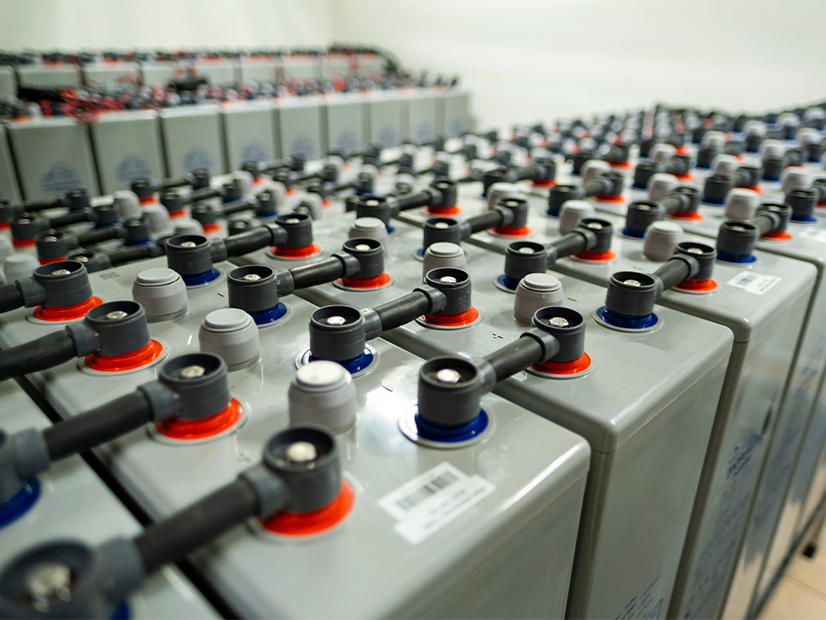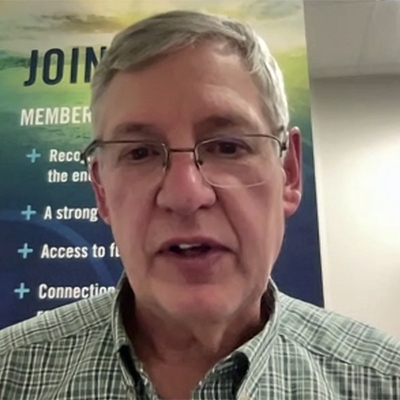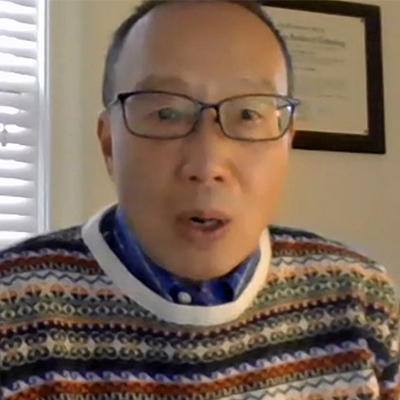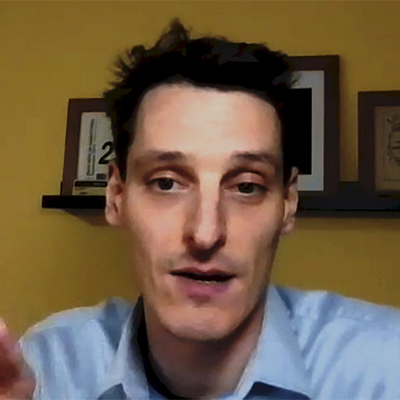
The energy storage units planned in great number in New York can also serve the state’s grid as transmission assets, a new study finds.
The white paper report — prepared for an organization advocating the advance and adoption of storage technology — uses actual and potential use cases to demonstrate the savings that could be realized by strategic use of storage rather than construction of new transmission lines.
 William Acker, NY-BEST | NY-BEST
William Acker, NY-BEST | NY-BESTThe New York Battery and Energy Storage Technology Consortium (NY-BEST) released the report Monday and followed up with a webinar Thursday. The report concludes that New York tariff and planning rules are an obstacle to exploiting storage as a transmission asset (SATA). William Acker, executive director of NY-BEST, told RTO Insider that the organization hopes to change this.
Along with a smaller price tag than transmission lines, storage offers a smaller footprint, a quicker installation time frame, and the flexibility to grow, shrink or relocate to adapt to what is likely to be a fluid state strategy during the clean-energy buildout, Acker argued.
Not mentioned in the report is the lifespan of batteries that are presently the dominant form of energy storage. They would need to be replaced long before transmission equipment would.
But the three use case studies projected that transmission wire solutions would cost 146 to 583% more than the initial capital costs for SATA, Acker said.
“You’re looking at numbers that allow for multiple replacement of storage,” he said.
Introducing the webinar, he noted New York’s plans to rapidly and radically increase use of green energy generation.
“We’re going to have an exceptionally large need for transmission and distribution buildout to support the decarbonization of the grid, the new renewable energy assets and the electrification of transportation and heating,” he said. “We’re looking at opportunities where storage can be used to make that buildout more efficient and cost-effective to consumers.”
 Henry Chao, Quanta Technology | NY-BEST
Henry Chao, Quanta Technology | NY-BESTQuanta Technology Vice President Henry Chao, who took the lead in preparing the study for NY-BEST, spoke of multiple potential benefits of SATA, including the flexibility to handle the gradual buildout of new power sources over the course of many years.
“Storage can help you to shave the peak and then add incrementally,” he said. “Eventually, five [to] 10 years later, you have to build transmission, but in the interim, those incrementally added renewables will not have to be subject to curtailment.”
Lars Stephan, senior manager of policy and market development at the energy storage firm Fluence, described one of the real-world use cases cited in the study: a 450-MW storage procurement that will allow Germany’s near-capacity grid to handle the increasing flow of renewable energy as the buildout of new transmission drags far behind the initial timetable.
 Lars Stephan, Fluence | NY-BEST
Lars Stephan, Fluence | NY-BEST“We’re seeing mounting costs of congestion in the German grid,” Stephan said. The cost totaled about 2.3 billion euros in 2021, he said, and multiplied in 2022 as the energy market reeled from the Russian invasion of Ukraine.
“As a measure to counter this, the German grid operators came up with the idea to use batteries as so-called grid boosters. … The fundamental principle is to use batteries to replace the N-1 requirement in grid operation.”
New York Gov. Kathy Hochul is proposing to double the target for energy storage installed statewide by 2030 to 6 GW, and most decarbonization scenarios call for much more storage capacity installed by 2040, to compensate for daily and hourly fluctuations in wind velocity and sunlight intensity. (See NY Proposes Credit System to Fund 6 GW of Energy Storage.)
In this environment, energy storage can serve as a power asset or a transmission asset, Acker said. “It gets complicated because storage in many cases can be both.”
What NY-BEST would like to see is for storage to be able to be compensated as either in New York. There are situations, Acker said, where payment through the power market mechanisms will not work and compensation through other rate mechanisms as a transmission asset is necessary. But it is not possible now.


